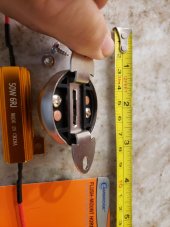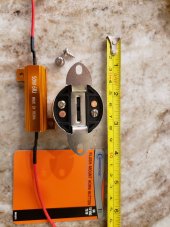I would ditch the small wire and get a 6ohm resistor from auto parts store.
They sell a two pack for 12.00 in the light bulb section as an led load resistor for turn signals.
They sell a two pack for 12.00 in the light bulb section as an led load resistor for turn signals.






